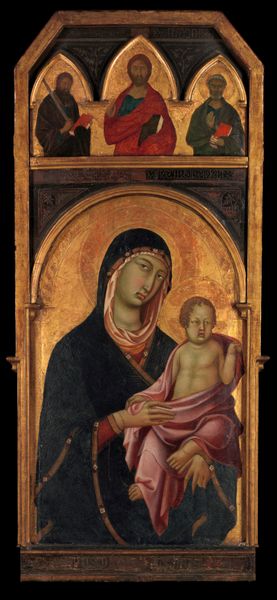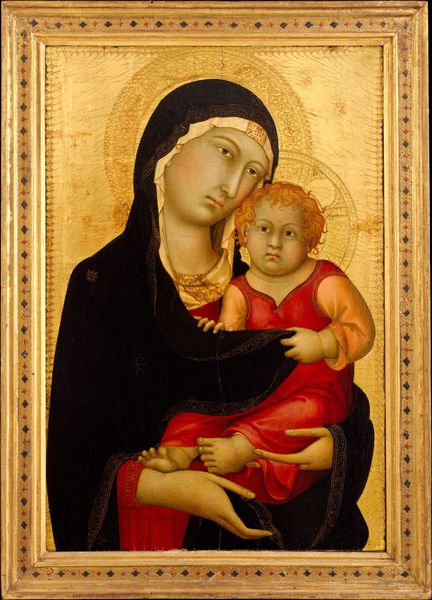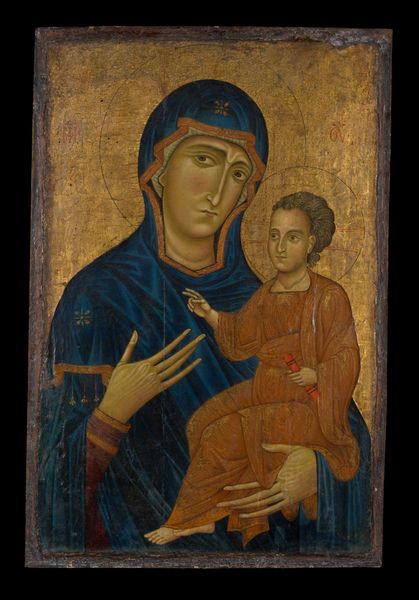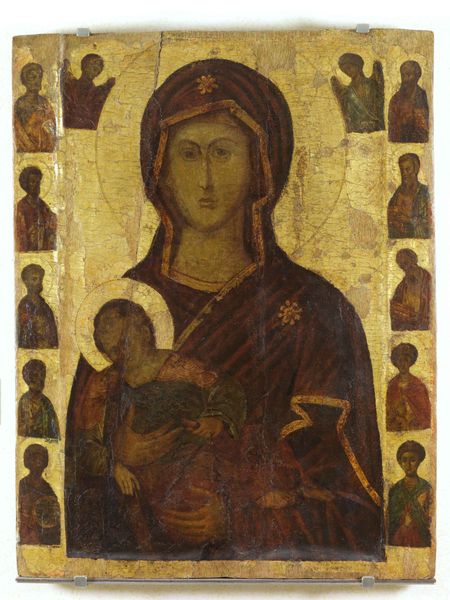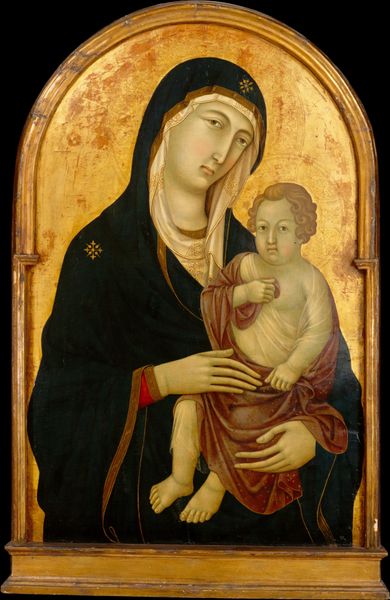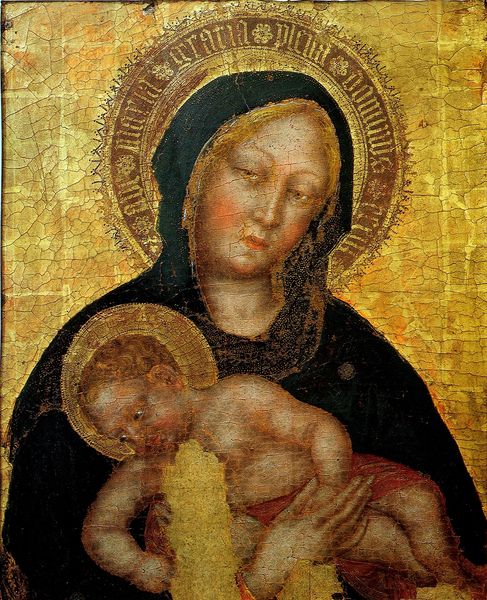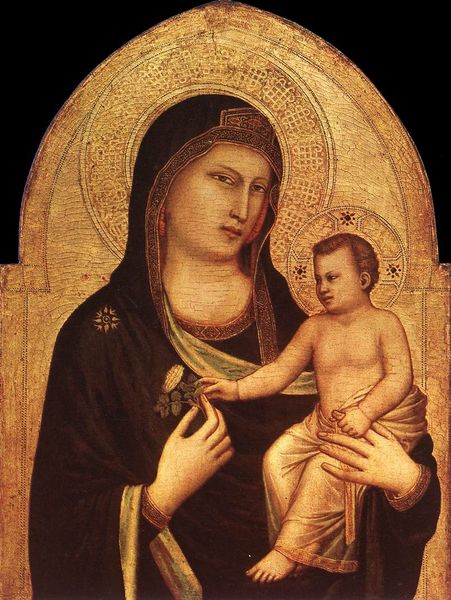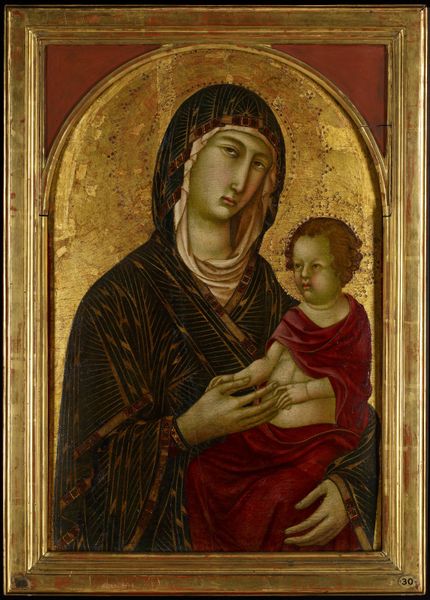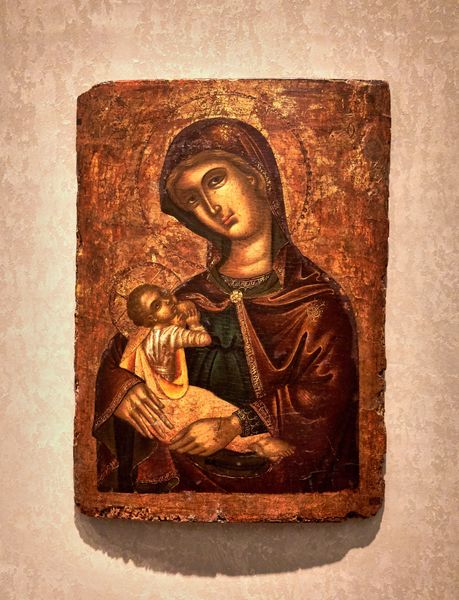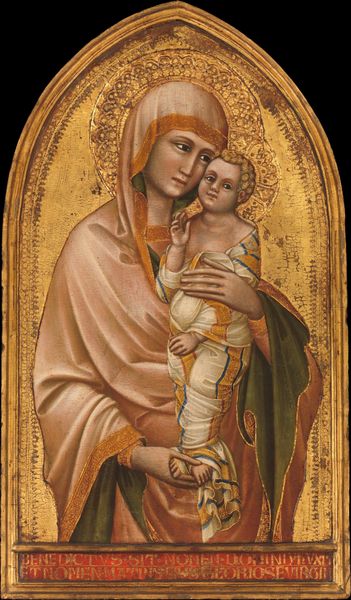
tempera
#
portrait
#
byzantine-art
#
tempera
#
history-painting
#
miniature
Copyright: Orthodox Icons,Fair Use
Curator: We're looking at "Our Lady of Perpetual Help," a tempera painting from around 1500, currently housed here at the Pushkin Museum. What are your initial thoughts? Editor: The first thing that strikes me is the somberness of the Virgin Mary's expression, juxtaposed with the intense vulnerability in the eyes of the child she's holding. It feels heavy, almost prophetic. Curator: Indeed. It’s important to note how this piece adheres to Byzantine artistic traditions while also demonstrating its own unique characteristics. Byzantine icons weren't simply portraits; they functioned as sacred objects linking the earthly to the divine. You will notice that while the main theme relates to religion and history, it still resembles portrait art because of its detailed figuration of two humans. Editor: You can practically hear the echoes of centuries of prayer whispering off its surface. Curator: Right. What's particularly striking is the role of women. Orthodox icons often served to emphasize Mary's agency and spiritual significance, even if within the context of predetermined roles. Here, she seems both regal and burdened, mirroring societal expectations. Her clothing almost resembles that of royalty, emphasizing that women could be placed on a high level as religious figures. Editor: Absolutely. But there’s also something subtly rebellious in the composition, don't you think? Like, maybe within the bounds of the style and dogma, an artist still found ways to quietly express emotional truth, despite societal structures or historical burdens placed on him or his subjects. Curator: It could be the universal feeling that it encompasses, which extends beyond cultural backgrounds. When looking at art such as this one, you should realize how many messages that would only surface if intersectional paradigms are explored and appreciated. Editor: Looking at this artwork, it makes me think about how we interpret motherhood throughout history and to what extent it has played a role in creating or destroying political discourses. Curator: This really underlines how complex and layered art history can be—the need for interdisciplinary conversation is always pressing. Editor: In the end, though, it comes down to how a piece of art resonates with each individual, what feelings it stirs in you in the present moment. For me, I know it’s brought up something incredibly raw.
Comments
No comments
Be the first to comment and join the conversation on the ultimate creative platform.


